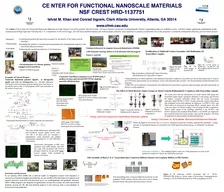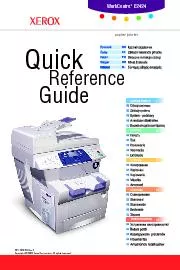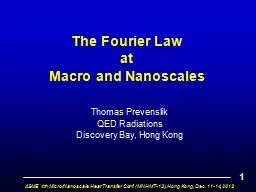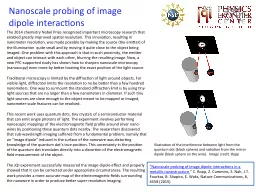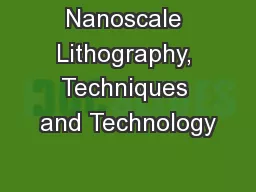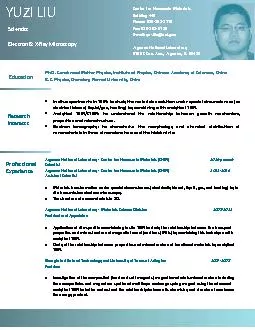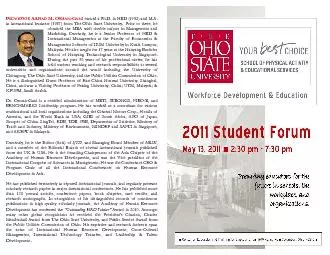PDF-CE NTER FOR FUNCTIONAL NANOSCALE MATERIALS NSF CREST HRD Ishrat M
Author : stefany-barnette | Published Date : 2014-11-21
Khan and Conrad Ingram Clark Atlanta University Atlanta GA 30314 wwwcfnmcauedu The vision of the Center for Functional Nanoscale Materials at Clark Atlanta University
Presentation Embed Code
Download Presentation
Download Presentation The PPT/PDF document "CE NTER FOR FUNCTIONAL NANOSCALE MATERIA..." is the property of its rightful owner. Permission is granted to download and print the materials on this website for personal, non-commercial use only, and to display it on your personal computer provided you do not modify the materials and that you retain all copyright notices contained in the materials. By downloading content from our website, you accept the terms of this agreement.
CE NTER FOR FUNCTIONAL NANOSCALE MATERIALS NSF CREST HRD Ishrat M: Transcript
Download Rules Of Document
"CE NTER FOR FUNCTIONAL NANOSCALE MATERIALS NSF CREST HRD Ishrat M"The content belongs to its owner. You may download and print it for personal use, without modification, and keep all copyright notices. By downloading, you agree to these terms.
Related Documents

